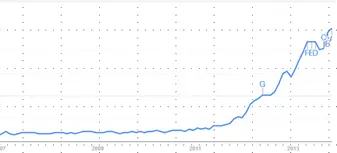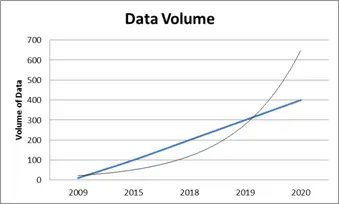Big Data
Challenges for the Hospitality Industry
ISBN 978-3-8442-7593-3
Copyright © 2013 Michael Toedt.
All rights reserved
1 stEdition April 2013 2 ndEdition December 2013 by Toedt, Dr. Selk & Coll. GmbH, Munich, Germany
Text © Michael Toedt
Coverdesign: Karin Toedt
Published by epubli GmbH, Berlin, www.epubli.de
Limit of Liability/Disclaimer of Warranty: This book is designed to provide information and motivation to our readers. The publisher does not intend to render any type of psychological, legal, or any other kind of professional advice. The content of each article is the sole expression and opinion of the author, and not necessarily that of the publisher. No warranties or guarantees are given by the publisher’s choice to include any of the content in this volume. Neither the publisher nor the individual author(s) shall be liable for any physical, psychological, emotional, financial, or commercial damages, including, but not limited to, special, incidental, consequential or other damages. Our views and rights are the same: You are responsible for your own choices, actions, and results.
Abstract
1. Introduction
1.1. The Increasing Amount of Data
1.2. From Data to Knowledge or from Big Data to Big Insight
2. Big Data in the Hotel Industry
2.1. Pregnant Without Knowing
2.2. Data throughout the Customer Journey
2.3. The Reality
3. Changes Required
3.1. Changes within the Organizational Structure
3.2. The Central Data Ware House - The Heart of Big Data
3.3. IT Investments
3.4. Big Data and Customer Relationship Marketing (CRM)
4. Conclusion
Literature
Index
About the Author
About Toedt, Dr. Selk & Coll.
Further Publications
Figure 1: Search for "Big Data" on Google
Figure 2: Growth of Data Volume by the Year 2020
Figure 3: From Data to Knowledge (own image)
Figure 4: The "Hotel Customer Journey"
Figure 5: Tagging Function in the CRM Software dailypoint™
Figure 6: Areas affected by Big Data
Figure 7: Big Data Changes in Organizational Structure
Figure 8: Increase of Data in the Next Years
Figure 9: Big Data IT Architecture (own image)
Figure 10: Hotel Software Map
Figure 11: List of different IT-Systems
Figure 12: Prerequisites for CRM
Abstract
The Power of Big Data and its Influence on Daily Business
Customer Data is the salt of our modern times.
In medieval times, merchants in the Mediterranean accumulated extreme wealth by trading in spices such as salt. Nowadays, the prosperity of a company strongly correlates with its ability to manage and use customer data. Data management can help to differentiate products and services from those of competitors and thus make a company far more competitive and profitable.
Data can also be used to enhance existing and create new products and services (co-creation), to market the right services at the right time through the right channels, and to provide a personalized and individualized service at the different points of interaction and sale.
The increasing use of social media and the continuous digitalization lead to the creation of an enormous amount of data. And the data volume will grow exponentially. This phenomenon is referred to as “Big Data”.
Experts agree that the phenomenon of Big Data will have a significant impact on the structure of organizations and the way companies will work and interact with their customers. Especially since 2011, the interest in the topic is soaring. The follow figure shows the searches on Google for the topic “Big Data” since 2007.

Figure 1: Search for "Big Data" on Google [1]
Nevertheless, many managers and organizations are still not aware of this fact, or they fail to implement the changes that are required to leverage Big Data.
Due to the lack of competence and knowledge about modern marketing tools combined with insufficient IT understanding within the senior management most hotel companies fail to generate value from the enormous amount of available customer data.
Today, customer data is collected in data silos, which sit in the different departments and are not connected. In the past decade IT decisions were mainly driven by Operations and not based on an overall marketing consumer strategy.
The heart of Big Data is to provide added value to the customer. Thus, it seems logical that the marketing department should take the lead in Big Data initiatives. This, however, requires profound analytical skills and technology understanding from marketing managers, as well as additional competences and responsibilities.
The use of Big Data can positively influence the quality of marketing initiatives and interaction with customers. The quality of marketing within a Big Data environment goes beyond appealing design. It is characterized by a real-time content delivery process, which provides offers and information to the recipients based on their individual needs.
For a hotel Big Data can help to push direct distribution which can result in higher profit margins. Hotels should start using Big Data in order to counter-act the loss of business to costly third-party websites. Big Data can help to secure the competitive advantage and to increase profitability by up to 100%.
The biggest obstacles are the lack of expertise within the senior management and the reluctance to implement the necessary technical, organizational, structural and HR changes.
This book gives an evaluation of the significance of Big Data for the hospitality industry and describes the key areas for successful implementation. It is addressed to both academic researchers as well as hotel operators.
1. Introduction
Find your Way into Big Data
1.1. The Increasing Amount of Data
dropping storage costs and the triumphant success of social media have led to an exponentioal growth of data over the Past years.
The volume of data is increasing by 35%-50% each year. Today, companies process about 1,000 times more data than a decade ago. [2] According to a McKinsey study, companies with over 1,000 employees in fifteen out the seventeen economic sectors in the US store on average 235 terabytes of data [3] . One terabyte equals 1,024 gigabyte. The phenomenon of a constantly growing amount of data is called “Big Data”.
The volume of data is increasing by 35%-50% per year.
Facebook, one of the dominant social media players, generates 2.5 billion pieces of content, 2.7 billion “Likes” and 300 million pictures every day. [4]
90% of all available data has been generated in the past two years.
90% of all available data has been generated in the past two years. By the year 2020, available data will have increased by the factor 50 compared to 2009. [5]The following diagram shows the growth rate calculated by IDC plus a calculated exponential trend line.

Figure 2: Growth of Data Volume by the Year 2020 [6]
Big Data is considered a new aspect of economy, which will take over a central part of the modern organizational theories (OT). Taylor, Weber or Fayol represent the classical approach of organizational theories where emphasis is on bureaucracy and administration. In the neoclassical approaches individual and group behaviors play a central role. The modern theories focus on organizations as systems which continuously adapt to the environmental changes. One of these modern theories is the social technical approach according to which an organization consists of people, technical systems and the environment. Big Data is an environmental change an organization has to adapt to.
Читать дальше














